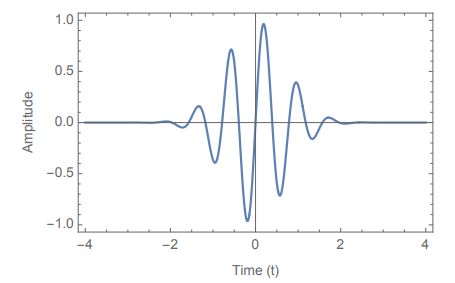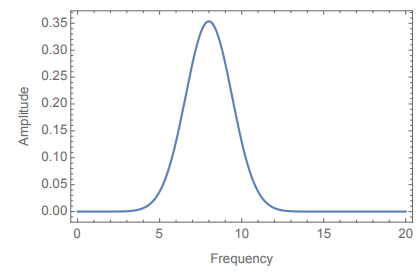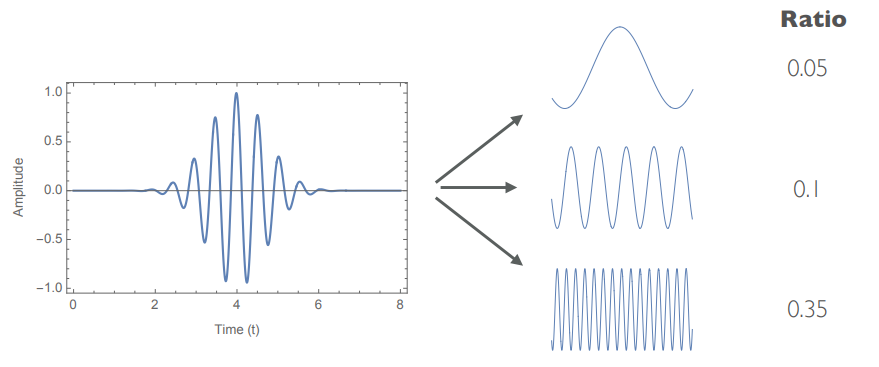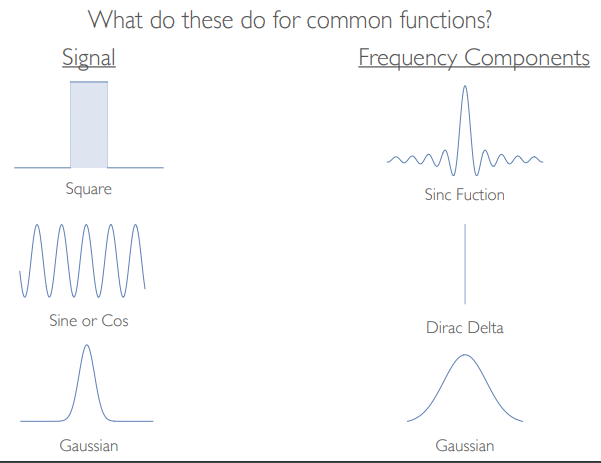Abstract:
In general it’s very easy to use Fourier Series to represent our waves as a combination of sine and cosine waves for [[Periodic Functions|Periodic Functions]] however we come to find that for non periodic functions, our fourier series begins to present us with some awful looking formulas.
Fortunately fourier himself provided us a solution to this, with his Fourier Transforms, which convert these complicated functions into their constituent waves
Formula:
Discrete Fourier Transform:
As fourier transform is done over bound to we can only do it over continous waves, however most of the time we’d like to do a Fourier Transform over finite discrete bounds, so we use Discrete Fourier Transform (DFT):
Where n is the position of the bit for example, and N is the length of the data being sampled Note :
Ex:
 Gives us:
Gives us:
 Which roughly means:
Which roughly means:

General Forms:
